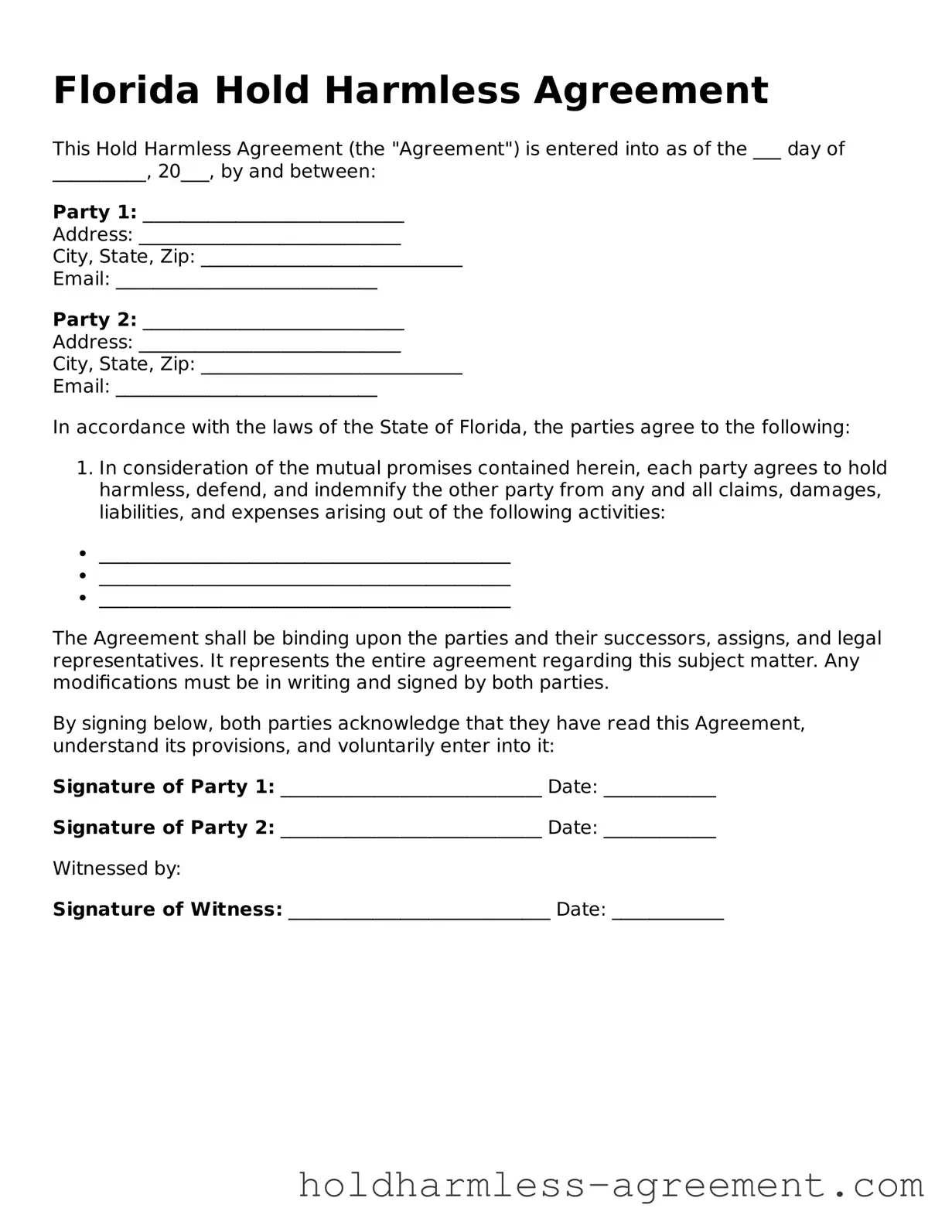What is a Florida Hold Harmless Agreement?
A Florida Hold Harmless Agreement is a legal document that protects one party from liability for damages or injuries that may occur during a specific activity or event. This agreement is often used in contracts related to construction, events, or other activities where one party may be exposed to risks. By signing this document, one party agrees not to hold the other party responsible for certain claims or losses.
Who typically uses a Hold Harmless Agreement in Florida?
Various individuals and organizations use Hold Harmless Agreements in Florida. Common users include:
-
Contractors and subcontractors in the construction industry
-
Event organizers and venues
-
Property owners renting out their space
-
Businesses hosting activities or events
These parties seek to limit their liability and protect themselves from potential lawsuits arising from accidents or injuries.
What are the key components of a Hold Harmless Agreement?
A well-drafted Hold Harmless Agreement typically includes the following components:
-
The names of the parties involved
-
A clear description of the activity or event
-
A statement of liability waiver
-
Any specific risks associated with the activity
-
The duration of the agreement
-
Signatures of all parties involved
Including these elements helps ensure that the agreement is enforceable and clearly outlines the intentions of both parties.
Is a Hold Harmless Agreement enforceable in Florida?
Yes, Hold Harmless Agreements are generally enforceable in Florida, provided they meet certain legal requirements. The agreement must be clear, specific, and voluntarily signed by all parties. Courts may enforce these agreements unless they are found to be unconscionable or violate public policy. It's important to draft the agreement carefully to ensure its enforceability.
Can a Hold Harmless Agreement protect against gross negligence?
No, a Hold Harmless Agreement cannot protect a party from liability for gross negligence or willful misconduct. Florida law does not allow individuals or businesses to waive liability for such serious misconduct. If a party acts with gross negligence, they may still be held liable for damages, regardless of the agreement.
How do I create a Hold Harmless Agreement in Florida?
To create a Hold Harmless Agreement in Florida, follow these steps:
-
Identify the parties involved.
-
Clearly outline the activity or event covered by the agreement.
-
Specify the liabilities being waived.
-
Include any necessary legal language to ensure clarity.
-
Have all parties review the document and sign it.
Consider consulting with a legal professional to ensure that the agreement complies with Florida laws and adequately protects your interests.
What should I do if I am asked to sign a Hold Harmless Agreement?
If you are asked to sign a Hold Harmless Agreement, take the time to read it carefully. Consider the following:
-
Understand the risks involved with the activity.
-
Determine what liabilities you are waiving.
-
Seek legal advice if you have any concerns or questions.
Signing such an agreement may limit your ability to seek compensation in the event of an accident or injury, so it is crucial to fully understand its implications before signing.
